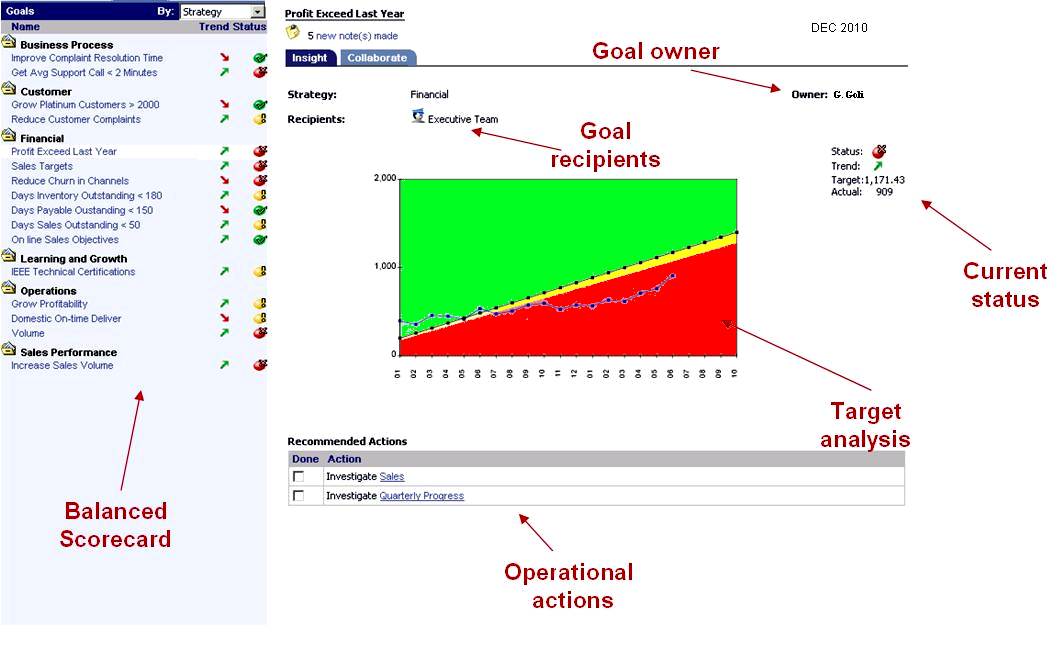BI Dashboards
Business Intelligence, Data visualization, KPI
Strategic dashboards
To begin with the highest level of company management, the strategic aspect of a company considers
stating, determining and achieving goals within an enterprise.
Thereupon, strategic dashboards are often connected directly with the balanced scorecard methodology invented
by David Norton and Robert Kaplan
In most cases, strategic dashboards are being used for monitoring company's progress in achieving predefined goals. Due to that, the general preview
on common strategic goals is followed with monitoring the relevant KPI's.
Then, strategic dashboards - as they're being used on the highest level of company's hierarchy - enable a dive down to lower levels of company's hierarchy.
In this case the executives can see the generalities first, and then drill through to more detailed reports.
Strategic dashboards provide exceptionally-wide functionalities, and there comes the question - how all the functionalities have been connected to keep the dashboard compact and intuitive?
It is possible due to increased data aggregation and graphic design - this makes dashboards clear and more transparent, and - therefore - easier to use.
Unfortunately, the generalization has extorted resigning from timeliness. To assure the compatibility of all tools included in strategic dashboards, updates
have to be done less frequently. It's not as important in the case of global measures as they're not changing as fast as local ones, but the
compromise must have been settled, alas.
Examples of strategic dashboards
We might divide the most common uses and metrics of strategic dashboards due to a business unit they're suitable for:
- In case of manufacturing department of the company, metrics linked to production seem the most important. Thereupon, with dashboard we might check product return rate, for instance, and investigate the trends - whether the rate gets lowered or not, and - if it does - how quickly.
- Dashboards used by a sales department are mainly focused on sales results and their trends and changes.
- Services department. Good contact with the customers is extremely important these days, therefore more and more attention is paid to services by the business. With strategic dashboards it is possible to measure the number of complaints, for instance.
- HR - Human resources department - all the metrics concerning people (employees) are extremely important to keep the company's flow. Employees retention rate is one of the examples.
- Even though the financ department demands often a detailed operational reporting, strategic dashboards are usually enough for the general review. Executives get a possibility to check average outstanding balances, for instance.
An example of business intelligence strategic dashboard containing a balanced scorecard with KPI Metrics, actual vs target analysis and recommended actions:
